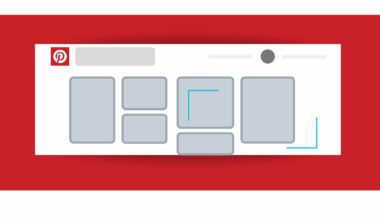Data-Driven Influencer Marketing: Analytics Tools Overview
In the evolving landscape of digital marketing, influencer marketing stands out due to its ability to connect brands with targeted audiences through relatable figures. Analyzing the effectiveness of influencer campaigns requires specific tools, mainly analytics solutions that help marketers gauge performance accurately. These tools not only track engagement and reach but also provide insights into audience demographics, behavior trends, and engagement data. By harnessing analytics, marketers can determine the return on investment for their campaigns and strategize accordingly. Popular analytics tools include Google Analytics, which allows monitoring traffic sources, and Hootsuite, excellent for social media metrics. Effective influencer marketing depends on understanding data, allowing brands to refine their strategies, tailor their content, and maximize their outreach. Establishing precise influencer metrics is fundamental; measuring impressions, engagement rates, and conversion rates enables brands to identify what works best. The right tools empower marketers to analyze campaign performance systematically and adapt to changes rapidly. User feedback also plays a crucial role in understanding audience sentiments toward influencer collaborations, guiding brands to make informed decisions based on data rather than mere assumptions.
Understanding audience demographics is critical in influencer marketing. Analytics tools facilitate comprehensive reporting on audience makeup, including age, gender, geography, and interests. These elements help brands align their messaging more effectively with their target users. Platforms like Facebook Insights and Instagram Analytics offer detailed data regarding follower activity and engagement levels. Tracking these metrics aids brands in refining their content to suit audience preferences, improving their chances of successful interactions. It’s imperative for brands to analyze how different demographics respond to various types of content. For instance, video content might resonate more with younger audiences versus images or text posts. Through continuous data analysis, brands can identify key influencers whose audiences align with their target demographic, increasing the chances of a successful partnership. Furthermore, tracking engagement rates on specific posts can help assess which influencers are driving higher conversions, allowing for strategic planning in future campaigns. Metrics such as click-through rates and social shares paint a fuller picture of an influencer’s effectiveness in reaching and engaging the desired audience.
Performance Measurement Tools
When diving into influencer marketing, selecting the right performance measurement tools is indispensable. These tools can provide real-time insights into how campaigns are performing and allow for rapid adjustments when necessary. Tools such as Brandwatch and Meltwater specialize in tracking brand mentions and social sentiment, critical for evaluating a campaign’s impact. Moreover, influencer platforms like Influencity and Upfluence offer in-depth analytics tailored specifically to influencer partnerships, allowing marketers to view detailed reports encompassing follower growth, engagement rates, and content performance. By analyzing these metrics, companies can discover which influencer collaborations yield the highest returns and optimal engagement levels. Optimization of influencer strategies relies heavily on being informed about campaign performance in real-time. Furthermore, understanding the broader market trends surrounding specific industries enables brands to position their campaigns effectively. The integration of AI technology in these tools enhances predictive analytics, giving marketers an edge in forecasting campaign success, enabling better budget allocation, and fine-tuning their audience targeting, ensuring optimal outcomes in influencer marketing strategies.
In influencer marketing, accountability is paramount. Analytics tools promote transparency by providing data verification and validation for influencer claims. Authenticity in collaboration assures brands that influencers deliver what they promise, especially regarding their audience sizes and engagement. Tools like Followerwonk enable brands to scrutinize an influencer’s audience quality, ensuring genuine connections rather than inflated numbers. This verification aspect is vital when brands invest significantly in influencer endorsements. Moreover, monitoring social listening metrics can reveal influencer credibility and public perception. When potential collaborators are evaluated based on authentic engagement rather than mere follower counts, campaigns have a higher probability of success. Analytics tools facilitate ongoing monitoring, allowing brands to pivot strategies as influencers’ relevance fluctuates over time. In tandem with this, setting specific KPIs enables marketers to measure success rigorously. They can utilize metrics including reach, impressions, engagements, and ROI to establish robust criteria for evaluating influencer partnerships. This responsible approach fosters trust and fosters lasting relationships between brands and influencers, ultimately leading to improved brand loyalty and audience connection.
Utilizing Predictive Analytics
Predictive analytics is reshaping influencer marketing by providing data-driven forecasts on consumer behavior. This proactive approach enables marketers to anticipate audience responses to various campaigns and refine their strategies accordingly. Tools that leverage big data, such as IBM Watson Analytics and Salesforce Einstein, can analyze patterns from past campaigns to project outcomes. By integrating machine learning algorithms, these tools help brands understand the dynamics of influencer effectiveness in real time. For example, an analysis of engagement trends can inform decisions regarding content types and posting schedules, optimizing outreach strategies. Predictive analytics helps in identifying future trends, ensuring brands are always one step ahead of competitors. Additionally, understanding how different demographics may react to influencers based on historical data aids in choosing the right partners. Those who use this advanced technology often see improved campaign ROI and more strategic influencer selections, closely aligning with business goals. Implementing predictive tools ensures a more agile marketing approach, allowing brands to allocate resources where they are most likely to achieve success, rather than relying on guesswork in an ever-evolving digital landscape.
Social media platforms evolve continuously, making it crucial for brands to stay updated with new features and analytics capabilities. Regularly leveraging analytics tools ensures that businesses can capitalize on emerging trends within influencer marketing. Tools such as BuzzSumo and SEMrush help brands identify trending topics relevant to their audience, guiding influencer collaborations. Monitoring content performance and audience feedback directly informs content strategies, allowing marketers to pivot quickly in response to engagement metrics. For instance, if certain posts achieve exceptionally high engagement, brands can replicate similar content types in future campaigns. Moreover, analytics tools assist in tracking competitors’ activities, enabling brands to remain competitive by benchmarking their performance against others. Keeping track of industry developments equips marketers with knowledge to outshine competitors and optimize their influencer marketing strategies effectively. Furthermore, continuously updating strategies based on data analytics ensures that campaigns resonate with target audiences and achieve optimal results, making the brand stand out from the noise in a saturated market. This data-informed approach results in more effective and efficient utilization of marketing budgets while enhancing overall campaign performance.
Conclusion
In conclusion, analytics tools are essential for successful influencer marketing strategies. They provide the insights that guide decision-making and optimize campaign effectiveness. As the digital marketing landscape continues to evolve, so too must the approaches brands take in evaluating influencer partnerships. Employing robust analytics solutions enables companies to track performance metrics meticulously, ensuring they derive maximum value from influencer collaborations. Additionally, the ability to foresee audience engagement patterns through predictive analytics offers a competitive edge. By embracing data-driven decision-making, brands can engage more meaningfully with their audiences, leading to stronger brand loyalty and increased conversions. Investing in comprehensive analytics tools ultimately allows businesses to cultivate long-lasting relationships with influencers, aligned with their strategic objectives. By understanding the nuances of data, marketers can craft campaigns that resonate with their target demographic while efficiently managing their resources. Influencer marketing thrives on genuine connections; analytical insights facilitate identifying those influencers who can bridge the gap between brands and consumers, creating authentic interactions. Overall, the marriage of analytics with influencer marketing ensures brands can navigate evolving trends and consumer expectations, remaining at the forefront of their industries.
In the ever-shifting world of digital marketing, embracing analytics tools is not just an option but a necessity. These tools empower brands to stay agile, informed, and prepared to adapt strategies in response to consumer behavior and market trends. The future of influencer marketing lies in leveraging data to enhance relationships with influencers and boost marketing performance. By focusing on measurable outcomes and actionable insights, brands can refine their strategies and continue to build effective influencer partnerships supported by data. As technologies advance, so will the capabilities of analytics tools, providing marketers with even deeper insights into their campaigns. Engaging with analytics experts can further enhance a brand’s understanding and application of these tools. Therefore, companies must prioritize data education within their marketing teams, fostering a culture where analytics is valued and utilized strategically. The continual evolution of social media and influencer marketing means that those who adapt fastest will thrive in the long run. Ultimately, the convergence of creativity, strategy, and analytics will define the next generation of successful influencer marketing campaigns, ensuring brands can achieve their goals and objectives.


